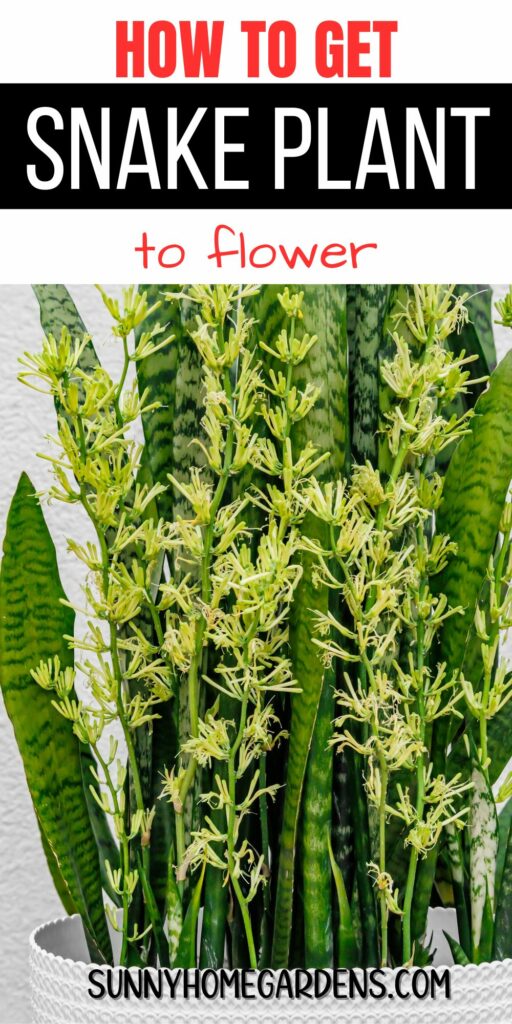Wondering how to make a snake plant bloom? We’ve got you covered in this guide.
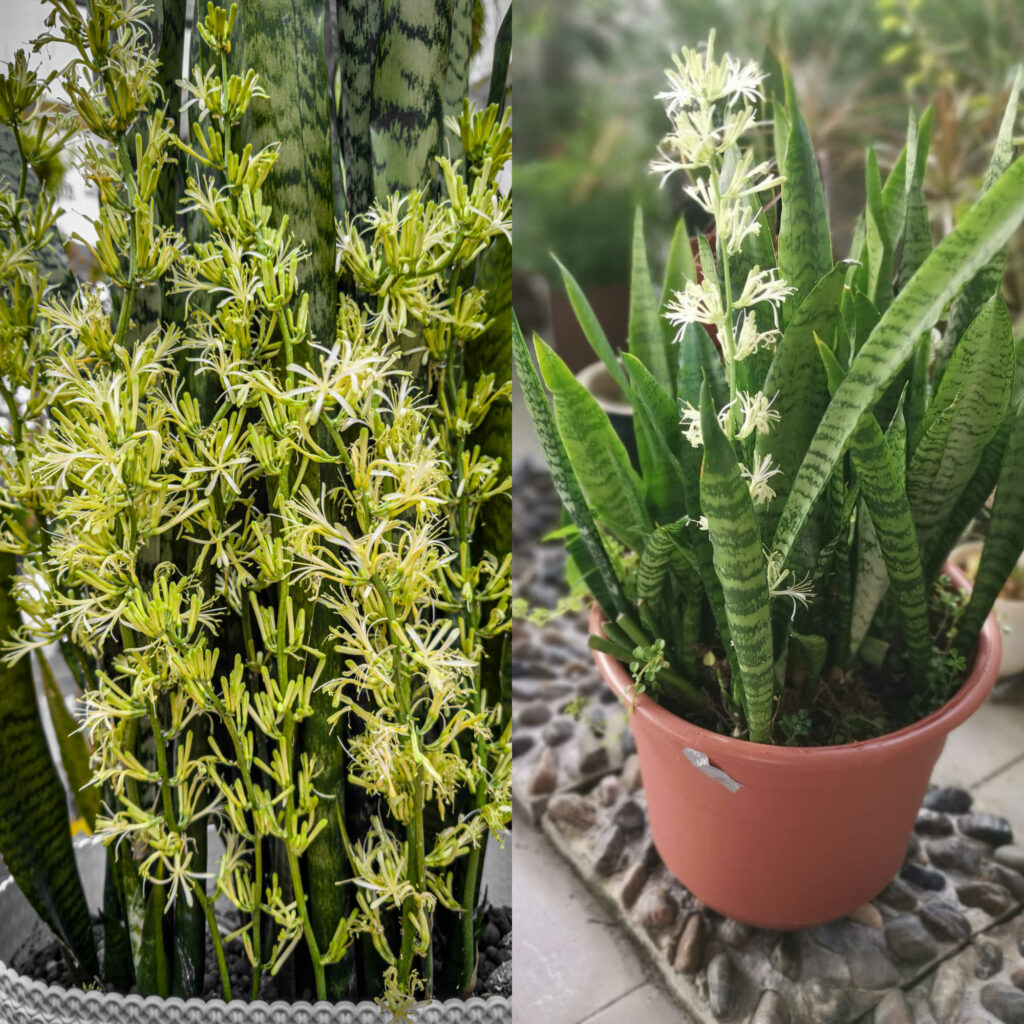
Snake plants, also known as Sansevieria or mother-in-law’s tongue, are popular houseplants loved for their air-purifying qualities and low maintenance requirements. This is a versatile plant that does well in low light as well as in light and it survives with neglect.
One thing about this amazingly hardy plant is that they can bloom beautiful delicate, little white flowers.
It is rare for it to bloom, but it can happen under the right conditions. Getting your snake plant to bloom may take some patience, but it’s worth the reward of seeing their delightful flowers!
Table of Contents
Snake Plants
Snake plants are recognized by their upright leaves that grow from a central base.
The leaves can have variegations or be solid in color, depending on the species or variety.
Snake plants are slow growers and can reach several feet in height under the right conditions.
Snake Plant Bloom Patterns
Snake plants have a unique bloom pattern that is influenced by various factors, including their species, age, and environmental conditions. While snake plants can bloom annually in their natural habitat, it is less common for them to bloom indoors.
Blooming usually occurs during the plant’s growing season, typically in spring, when the plant is coming out of its winter dormancy.
The first sign that a snake plant is preparing to bloom is the appearance of a thin, green flower spike emerging from the center crown of leaves.
The small green buds along the stem gradually open at night, starting from the bottom of the spike and moving upwards.
The blooming process can last for several weeks, and it is followed by the development of bright orange berries, which can only be produced through hand pollination in indoor settings.
How to Make Your Snake Plant Bloom
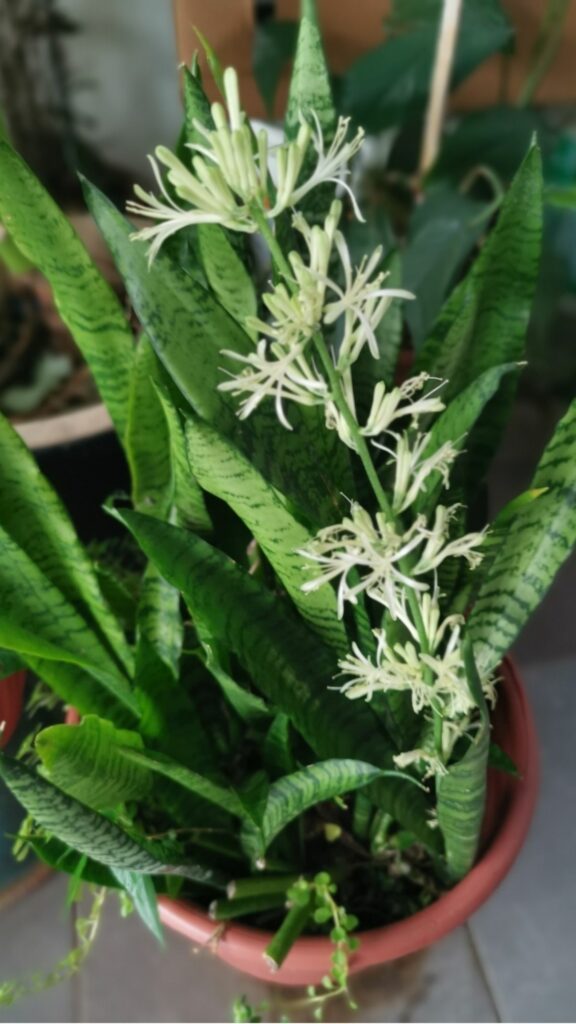
If you want your snake plant to bloom, make sure to create an ideal environment. This involves providing the right conditions for lighting, temperature, soil, and pot selection.
Lighting Conditions to Encourage Blooming
Make sure you snake plant has plenty of bright, indirect sunlight. If it isn’t getting enough light, it might not bloom.
While snake plants are a favorite for low light conditions since they do so well in them, they also do well in sunny locations. Just make sure the sun isn’t so powerful it sunburns the plant.
In low light, the snake plant will grow slower. If you have your snake plant in the sun, it will grow faster. This faster growth will help increase the chances of it blooming.
Temperature Considerations for Optimal Growth
The snake plant is from Africa and not only loves sunlight, but likes a warmer temperature as well. Try and keep your snake plant in a warm spot, ideally around 80°F, but make sure the temperature doesn’t go below 50°F for a lengthy period of time.
Soil and Pot Selection
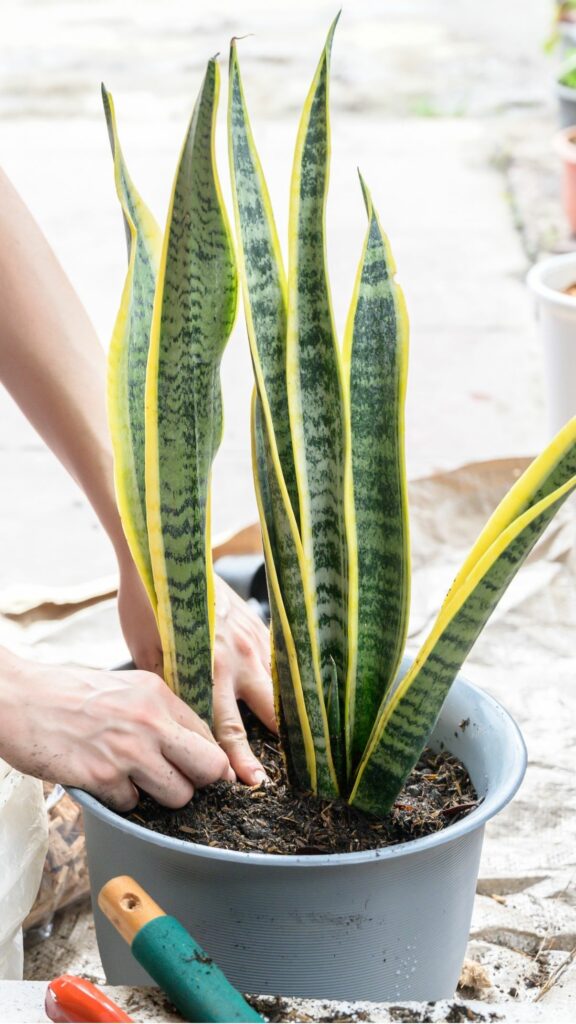
Make sure your snake plant is planted in well-draining potting soil.
And, if you’re trying to get your snake plant to bloom, it tends to bloom when it’s root bound. So, make sure your pot isn’t too large. The pot should just be slightly larger than the root system of your plant.
Watering
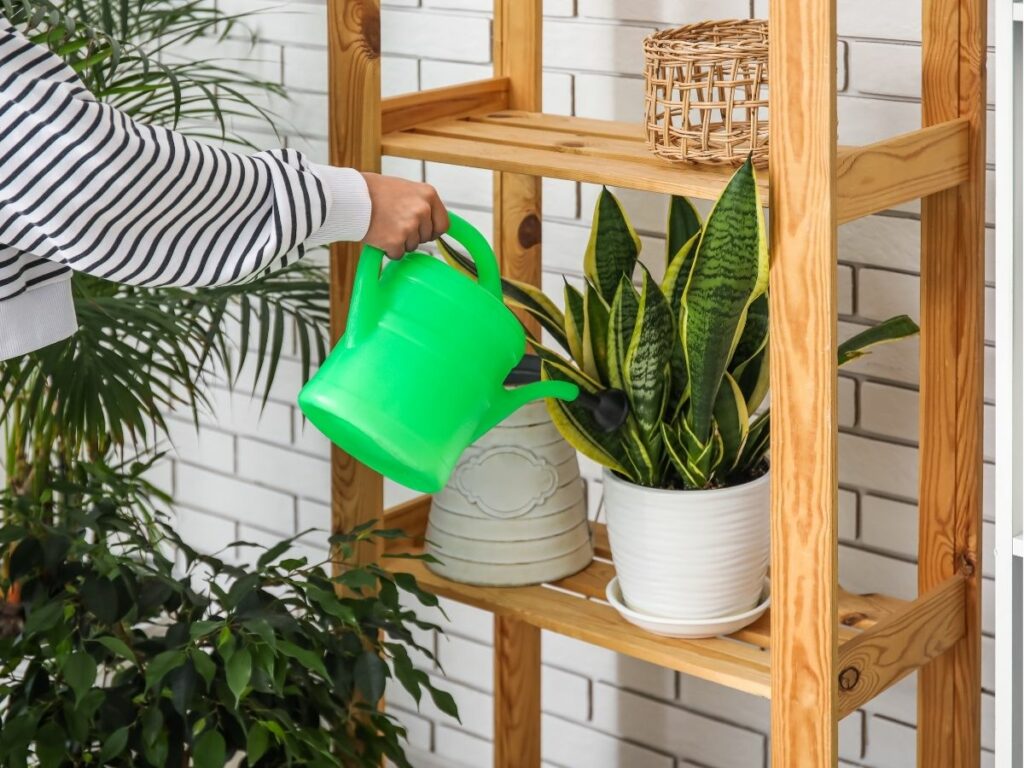
Snake plants prefer to dry out between waterings.
This is because they are adapted to survive in arid conditions, and their roots can easily rot if kept excessively moist.
Water your snake plant when the soil is just dried out. If not watering for weeks and months, it will slow the growth of the plant.
I have also heard a “rumor” that if you water with rice water, that will help your snake plant flower.
Fertilizing
Feeding your snake plant a fertilizer will make sure that your snake plant receives all the essential macro and micronutrients it needs for optimal growth and blooming.
Occasionally fertilize your snake plant using a diluted houseplant fertilizer during its active growing season, which is typically in spring and summer. .
Remember to always water your snake plant before applying fertilizer. Watering will make sure that the soil is adequately moist and ready to receive the nutrients. Avoid fertilizing dry soil, as this can lead to fertilizer burn.
Age
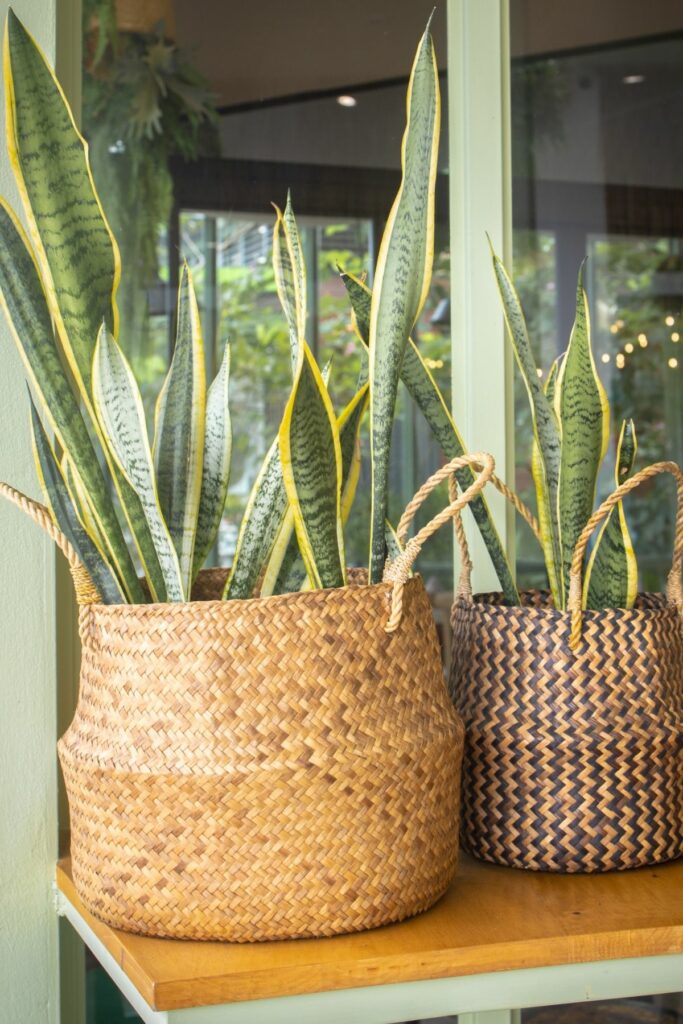
How old your plant is can contribute to whether it will flower or not. As the plant ages, it becomes more likely to produce flowers, as it has gone through the necessary growth stages for blooming.
Younger snake plants may take longer to reach the flowering stage, while mature plants are more likely to bloom regularly.
Balancing Stress and Care for Bloom Inducement
When applying stress techniques to promote blooming, it’s crucial to strike a delicate balance between stress and care. Excessive stress can harm the plant, while insufficient stress may not trigger the desired flowering response. Here are some tips for balancing stress and care:
- Adjust lighting: Provide the plant with the right amount of light to simulate its natural environment. Place it in a location with bright, indirect light for several hours each day.
- Control temperature: Maintain temperatures within the plant’s preferred range (70-90°F or 21-32°C). Avoid exposing the snake plant to drafts or sudden temperature fluctuations.
- Watering practices: Adjust the watering frequency and amount, allowing the soil to dry out between waterings. Avoid overwatering or keeping the soil consistently moist.
Final Thoughts on How to Make a Snake Plant Bloom
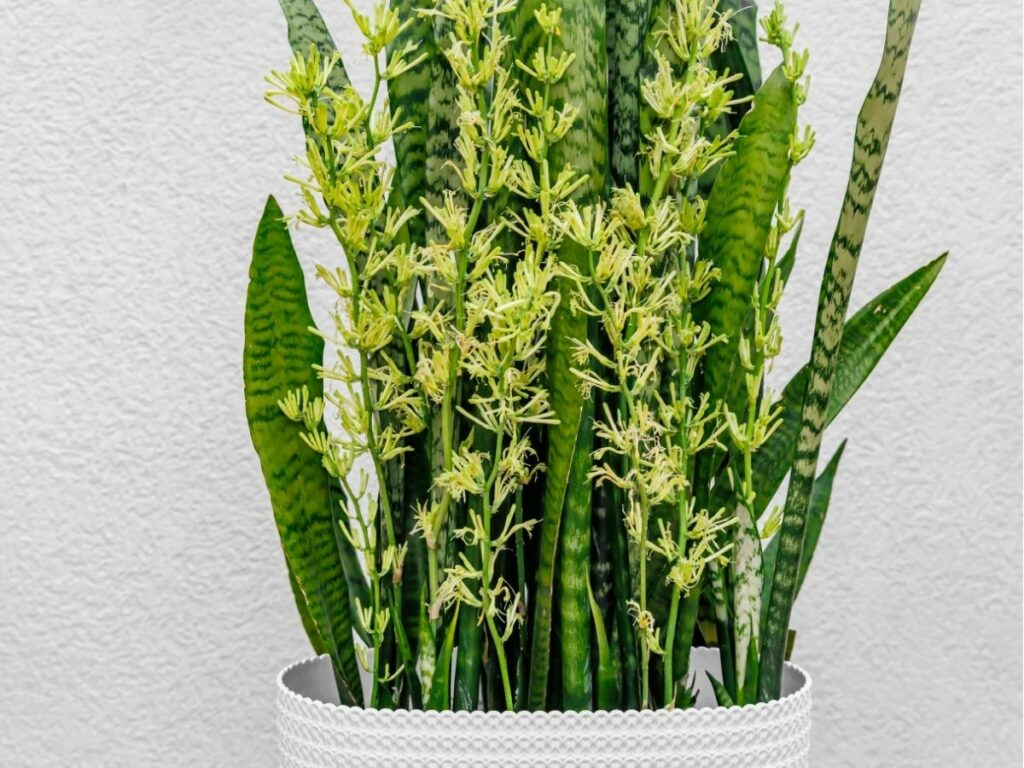
Keeping the right environment will help to make you snake plant bloom.
Remember, it may take some time and patience for your snake plant to bloom, as different factors such as age, size, and environmental conditions can influence its blooming potential.
However, dedication and the right techniques can significantly increase the chances of your snake plant producing stunning flowers.
So, continue to nurture your snake plant, and soon enough, you’ll be rewarded with the sight and scent of its delightful blooms. In the meantime, enjoy the beautiful green foliage of this beautiful plant.


